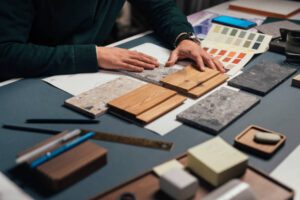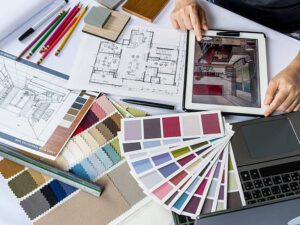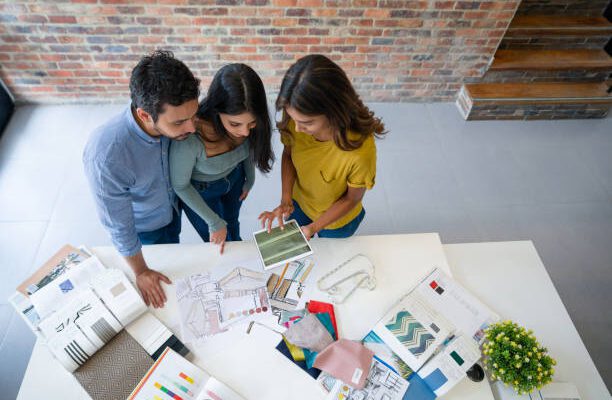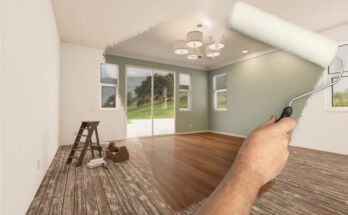Working with an interior designer can be an exciting and rewarding experience. Whether you’re looking to transform your entire home or simply revamp a specific room, a skilled designer can help bring your décor dreams to life. But where do you start? In this comprehensive guide, we will explore the key steps and considerations involved in collaborating with an interior designer. From initial discussions and vision boards to the dos and don’t s of working together, we’ll provide you with valuable insights from industry experts to ensure a successful partnership.
Finding the Right Interior Designer
Before embarking on your interior design journey, it’s crucial to find the right designer who aligns with your vision and style. Just like dating, the designer-client relationship should be based on trust and compatibility. Here are some essential steps to follow when searching for the perfect match:
1. Research and Interview
 (Photo from iStock)
(Photo from iStock)
Take the time to research and interview multiple designers to find the one that suits your needs. Look for designers who have experience in the type of project you have in mind, whether it’s residential, commercial, or a specific style. Check their portfolios, read client testimonials, and ask for references from recent clients to gauge their expertise and professionalism.
2. Compatibility and Communication
During the interview process, pay attention to how well you connect with the designer on a personal and professional level. Communication is key throughout the design process, so it’s essential to find someone who understands your goals, listens to your ideas, and communicates effectively. You should feel comfortable collaborating and expressing your preferences, as this will lead to a more successful outcome.
3. Budget and Fees of interior designer
Discuss your budget upfront and ensure that the designer is transparent about their fees and any additional costs that may arise during the project. Ask questions about how they handle revisions, changes in design, and the ordering and installation process. Understanding the financial aspects of the collaboration will help manage expectations and avoid surprises down the line.
Establishing Project Scope and Vision
Once you’ve chosen your interior designer, it’s time to dive into the details of your project. Clear communication and a shared vision are crucial in ensuring that the design aligns with your expectations. Here are some key considerations during this phase:
1. Define the Scope of Work
 (Photo from iStock)
(Photo from iStock)
Start by discussing the scope of work with your designer. Identify which spaces you want to work on, the level of construction involved, and any specific timelines or deadlines you have in mind. Becca Roderick, director of One Kings Lane Interior Design, emphasizes the importance of addressing these details upfront to ensure a holistic understanding of the project.
2. Share Your Lifestyle and Preferences
To facilitate the design process, provide your designer with insights into your lifestyle, including any factors that may influence the design, such as children or pets. Discuss your preferences for furniture, colour palettes, and overall aesthetic. A designer with expertise in interior design and decoration, suggests involving your significant other in these discussions to ensure a shared vision.
3. Create a Vision Board for interior designer
 (Photo from iStock)
(Photo from iStock)
A vision board is an incredibly efficient way to communicate your ideas to your designer. Gather inspiration images, fabric swatches, and magazine clippings that represent your desired aesthetic. By visually conveying your preferences, you can avoid miscommunication and ensure that your designer understands your vision accurately.
The Do’s and Don’ts of Collaboration with interior designer
Collaborating effectively with your interior designer requires clear communication, trust, and a willingness to be open and honest. Here are some dos and don’ts to keep in mind throughout the process:
Do’s:
- Be Direct and Decisive: Make decisions promptly and communicate your preferences clearly. This will help your designer be efficient in meeting your design needs.
- Trust Your Designer’s Expertise: Remember that you hired a designer for their expertise. If they recommend something or express concerns about your vision, trust that they have your best interests in mind.
- Be Honest and Transparent: Share your budget, likes, dislikes, concerns, and even your wildest design aspirations. Being honest and transparent will help your designer understand your expectations and tailor the design accordingly.
Don’ts:
- Expect Miracles: While designers are natural problem-solvers, it’s important to be realistic about what can be achieved within the constraints of your project. Understand that a designer can enhance a space but cannot fundamentally change its inherent characteristics.
- Make Last-Minute Changes: Making changes after the design has been finalized can compromise the integrity of the design, delay the implementation, and incur additional costs. Avoid unnecessary changes by thoroughly discussing and finalizing the design before moving forward.
Overcoming Challenges in the Design Process
 (Photo from iStock)
(Photo from iStock)
The design process can sometimes present challenges that require patience and understanding from both the client and the designer. Here are a few common challenges and tips for overcoming them:
1. Patience with the Evolution of the Space
As items start to arrive and the space takes shape, it’s common for clients to have concerns or doubts. Becca Roderick highlights the importance of giving the room a chance to come together before making judgments about individual items. Trust the process and allow the space to evolve as intended.
2. Clear Decision-Making and Timely Communication
Indecisiveness and delayed communication can significantly impact the design process. Clients to be clear about their preferences and make decisions in a timely manner. Prompt responses and effective communication will help keep the project on track and avoid unnecessary delays.
Working with an interior designer can transform your home and bring your décor dreams to life. By finding the right designer, establishing a clear vision, and maintaining open communication, you can create a truly personalized and stunning space. Remember to trust your designer’s expertise, be honest about your preferences, and stay actively involved in the decision-making process. With these guidelines in mind, you’ll be well-equipped to navigate the exciting journey of collaborating with an interior designer.





One Comment on “How to work with an Interior Designer”